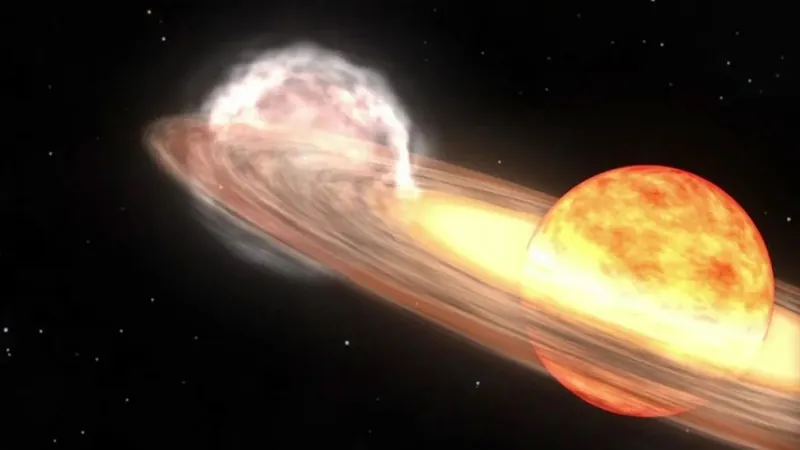
The Blaze Star Eruption: A Dazzling New Light in the Night Sky Awaits!
2024-10-01
Author: Li
Skywatchers and astronomy enthusiasts around the globe are on high alert as astronomers anticipate a stunning cosmic spectacle known as the Blaze Star eruption, a rare event that could unfold at any moment.
What is the Blaze Star?
Located approximately 3,000 light-years away in the constellation of Corona Borealis, the Blaze Star—officially known as T Coronae Borealis—is a unique binary star system. It features a white dwarf star that siphons heat and pressure from its companion, a massive ancient red giant. This intricate interaction leads to an impending thermonuclear explosion, a phenomenon that occurs approximately every 80 years, where the accompanying nova will become visible to the naked eye for a brief period of one to two weeks before fading away.
Understanding the Explosion
Unlike a supernova, which signifies the end of a star’s life, this explosion allows the white dwarf to remain intact. This cycle of energy exchange and eruption is expected to continue for tens of thousands of years, offering a recurring spectacle for future generations.
Significance for Future Astronomers
Dr. Rebekah Hounsell from NASA’s Goddard Space Flight Center emphasizes the monumental significance of this event, describing it as a fantastic opportunity for budding astronomers: "It’s a once-in-a-lifetime event that will inspire young individuals to engage with astronomy, ask questions, and gather their own data. It’s sure to fuel the next generation of scientists.”
Preparing for the Eruption
But how is the astronomical community preparing for this stellar event? The American Association of Variable Star Observers (AAVSO) announced that the Blaze Star has recently exhibited signs of dimming, suggesting that the moment of eruption could be imminent. While some predictions have suggested that the explosion could occur by September 2024, no confirmed evidence of such an event has surfaced yet.
Observational Tools and Strategies
NASA's Fermi Gamma-ray Space Telescope, along with the European Space Agency’s INTEGRAL telescope, will be critical observers when the Blaze Star erupts. Elizabeth Hays, chief of the Astroparticle Physics Laboratory at NASA Goddard, explained that multiple observational tools will allow astronomers to study this eruption from various perspectives: "Typically, nova events are too faint and distant to pinpoint precisely where the energy is sourced. However, this explosion will be in a prime location, vastly increasing our observational capacity to understand the intricacies at play."
The Anticipation Builds
As anticipation builds, astronomers and enthusiasts alike are gearing up for a celestial display unlike any other. Will you be among the lucky observers able to witness this cosmic wonder? Keep your telescopes ready, for the night sky is about to dazzle with a newfound brilliance! Don’t miss out on the chance to be a part of this historical astronomical event!



 Brasil (PT)
Brasil (PT)
 Canada (EN)
Canada (EN)
 Chile (ES)
Chile (ES)
 España (ES)
España (ES)
 France (FR)
France (FR)
 Hong Kong (EN)
Hong Kong (EN)
 Italia (IT)
Italia (IT)
 日本 (JA)
日本 (JA)
 Magyarország (HU)
Magyarország (HU)
 Norge (NO)
Norge (NO)
 Polska (PL)
Polska (PL)
 Schweiz (DE)
Schweiz (DE)
 Singapore (EN)
Singapore (EN)
 Sverige (SV)
Sverige (SV)
 Suomi (FI)
Suomi (FI)
 Türkiye (TR)
Türkiye (TR)